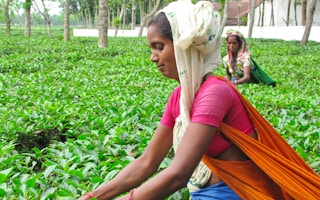On a recent trip to Bolipara in Bangladesh, I saw burned hills – mile after mile – in preparation for ‘slash and burn’ (jhum) cultivation. To an environmentalist, it is just painful. But when you know the lives of the people in this area, you react differently.
To continue reading, subscribe to Eco‑Business.
There's something for everyone. We offer a range of subscription plans.
- Access our stories and receive our Insights Weekly newsletter with the free EB Member plan.
- Unlock unlimited access to our content and archive with EB Circle.
- Publish your content with EB Premium.
Bolipara is located in the Chittagong Hill Tracts (CHT), the hilly part of Bangladesh which is otherwise a famous flood-prone delta. As well as being home to rich biodiversity, the CHT is culturally diverse.
Thirteen ethnic groups lead heavily nature-dependent lives here in geographical isolation. They were also cut off from IT and communications until they were brought under mobile network coverage six years back.
“How is the traditional jhum cultivation doing nowadays?” was my question to three tribal groups I met in Bolipara.
If we take rice, over the last decade, people have been getting only 30 to 40 percent of the production they got 20 or 30 years ago – and that only after generously applying fertilisers, pesticides and herbicides.
The groups noted that a lack of forest cover is making the soil dry, causing bad jhum harvests.
Practising jhum on the same hill every year, instead of after a five-to-10 year gap, is another reason for low yields. And the weather was blamed too for being quite ’different’ over the past decade, with a blurring of seasons and increasingly erratic rains.
Given these peoples’ strong bond with nature, I was expecting to find some indigenous innovations to tackle low crop production. But there were none.
Although they had been using chemical fertilisers for the last 10 years and herbicides and pesticides (known locally as ‘poisons’) for five or six years to improve the jhum harvest, they never tried anything but traditional crop varieties, despite low yields.
Adoption vs Innovation
It isn’t that tribes in Bolipara do not embrace new ideas and technologies.
“
Climate change is a phenomenon with immeasurable extent and considerable uncertainties. Given the limited resources and time we have, neither traditional knowledge and practices, nor advanced technologies alone, are likely to be enough for continuous adaptation.
A booming business in agro-chemicals in local bazaars, extensive tobacco cultivation in almost all non-jhum-able open spaces, the growing number of mobile phones, and spread of solar panels on traditional thatched roofs tell us that people here do accept new things.
But there is a big difference between accepting new technologies and being innovative. The first action is largely linked with markets and the private sector. Market systems may often capitalise on the poverty, simplicity and customs of indigenous people.
For example, the recent promotion of solar home systems in the CHT, enabled by tobacco farming, shows the complex role of markets in human development. Despite its environmental impacts, tobacco growing generates cash, which people are being persuaded to invest in solar energy equipment.
Innovation, on the other hand, is a response to the demands of a situation. Adaptation to climate change, for example, demands innovation as an ever-running process – in new contexts and as time evolves.
But innovation cannot originate in isolation. It needs to interact with other entities and systems around us.
Mixing traditional and modern
Given indigenous peoples’ strong ties with nature, they are often considered as efficient adaptors to climate change. Recent examples from around the globe justify that too.
This assumption, however, may not always be true. Indigenous systems have their own limitations – poverty, customs, beliefs, low literacy, and cultural and linguistic isolation.
Countless social and development drivers, including climate stresses, also put pressure on indigenous people to change every day.
Climate change is a phenomenon with immeasurable extent and considerable uncertainties. Given the limited resources and time we have, neither traditional knowledge and practices, nor advanced technologies alone, are likely to be enough for continuous adaptation.
We should not treat indigenous technology and knowledge as a separate area needing special attention outside the mainstream. It should be considered alongside modern technologies in our adaptation discussions and actions.
Haseeb Md. Irfanullah leads the disaster risk reduction and climate change programme of Practical Action in Bangladesh. This piece originally appeared on Thomson Reuters Foundation’s Alertnet.











